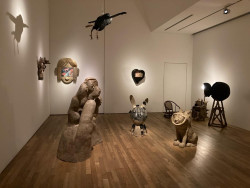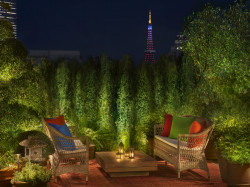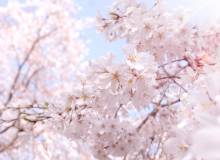
December 11, 2003
Time and again
The history of Arima runs as deep as its hot springs. Stephen Mansfield soaks up the local ambience.
By Metropolis
Originally published on metropolis.co.jp on December 2003

Photos by Stephen Mansfield
Peel away the shabby postwar surface of construction that is often passed off as modernity, and there is at the center of most Japanese towns a historical kernel, a core essence waiting to be discovered. Finding such places is a quest of sorts, requiring patience, and a cultivated insensitivity to the eyesores that assault those who undertake these hopeful, largely rewarding searches. One such place with a traditional core that is not immediately apparent on arrival is Arima Onsen, an agreeable 30-minute trip from Kobe.
Arima sits on the north slope of Mount Rokko, in a green valley at the confluence of three rivers. First impressions, however, are not encouraging. Giant ferro-concrete hotels resembling dam walls disfigure the surrounding hills; hotel touts assail passersby and parking attendants bark at arriving tour buses. But the history of Arima runs deep. Predating the founding of Nara as the capital in the 7th century, the spring has been delighting guests for well over a millennia. The spa enjoyed renewed popularity in the 17th century after Hideyoshi Toyotomi and his wife Nene began visiting in the company of the tea master Sen no Rikyu. Toyotomi’s entourage of servants, ladies-in-waiting, bowmen, soothsayers and cooks, would have reached the spring by a combination of ox cart and covered palanquin. In more recent times, the late novelist Junichiro Tanizaki enjoyed frequent visits to Arima’s older, more traditional inns.

Soothe your aching bones
Arima’s waters are divided into two types: the transparent ginsen, and kinsen, a rust-colored brew rich in iron. Promoted as a relief for neuralgia, skin problems and “women’s disorders,” Arima’s bucolic waters are said to be especially effective for gastrointestinal diseases. For day visitors, the tourist office recommends a soak at Arima Onsen Kaikan, the public bath near the station terminus, a haunt of pensioners seeking relief from constipation and other chronic digestive system disorders. For a more scenic, short-stay bathing experience, Kampo no Yado, in a shrine area ten minutes west of the station, provides a more appealing hillside setting.
The more traditional side of Arima can also be experienced in its cuisine. Tansan senbei, a low-calorie rice-cracker baked using the water from Arima’s cold spas, is a popular buy. At Keigetsu, a restaurant run by the Kosenkaku Inn, a more refined fare is served. The three set courses are vegetarian temple cuisine. The simplest of the three, called Hana, consists of no less than 16 separate dishes.

Go back in time
Arima’s older, hidden core, can be found in the Onsen-ji district, an area strongly associated with Toyotomi. The district’s premier shrine, Tosenjinga, is tucked into a cedar and plum grove that forms one side of the quarter. Two adjacent temples, Onsen-ji and Gokuraku-ji, are distinctive for sumptuous altars and the piles of salvaged Confucian roof pediments and Buddhist statuary that lay around their grounds, exuding an air of antiquity. Nene’s summer villa is also here, now serving as Nembutsu-ji, a rustic temple whose elegant Japanese garden has an ancient sal tree much visited in June when its white blossoms fall onto a bed of surrounding moss.

A medina of winding lanes, old wooden houses and serpentine slopes like Negai-zaka and Tansan-zaka, the area has a number of interesting art and craft shops, the latter specializing in the playful Arima doll brushes. The brush contains a concealed doll at one end that pops up when the pen is tilted for writing, a humorous souvenir created over a thousand years ago. The more serious craft of making Arima baskets likely dates from the 16th century. The costlier baskets-the smoked and lacquered variety-are much coveted for their use in the tea ceremony and in flower arranging.
Embodying the spirit of Arima’s older quarter is the graceful Hotel Hanako Yado. The inn sits at the foot of the flight of steps leading to Tosenjinga. Well-to-do foreigners were regular visitors to the hotel before the war, coming up from the port settlement in nearby Kobe during the humid summer months. Like Simla and Ooty, fashionable British hill stations in India, or the French colonial retreats in Cambodia’s Cardamom Mountains, Arima seems to have offered a much needed respite from life in the humid lowlands, at least for those who could afford it.
Getting there
Arima Onsen can be reached from Kobe by taking the Dentetsu line from Taigami subway to Arima Guchi. Transfer here for the terminus at the hot spring. There are also buses to Arima from Sannomiya and Shin-Kobe stations.

Where to stay
The Arima Grand Hotel is popular for the huge bathroom with various types of water at the 9th top floor. It’s a 16-minute bus ride from Arima-Onsen stn. For reservations and info on room rates, call 078-904-0181, fax 078-903-2583 or visit www.arima-gh.co.jp. Arima Gyoen is near Arima-Onsen stn. For reservations, call 078-904-3737, fax 078-903-1837 or visit www.a-gyoen.com. Kammi-o-Bo (078-904-0531) is a modest traditional inn along the main street. A bit more upscale is the exquisite Hanako Yado, the smallest hotel in the region. Call 078-904-0281, fax 078-904-3601 or visit www.goshobo.co.jp/hanakoyado.
More information
Craft shops are everywhere beginning virtually at the station exit, but see the old quarter for the finer work. For more information on accommodation and sights in the area, visit
www.hyogo-tourism.jp/english/authen_e/index.html.
[geo_mashup_map]







